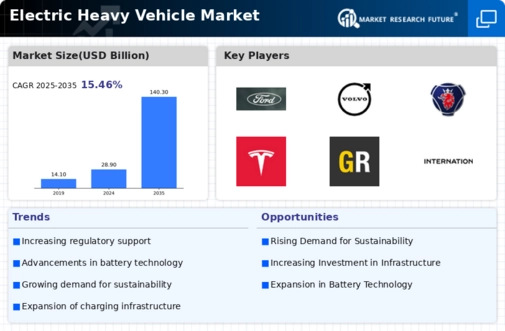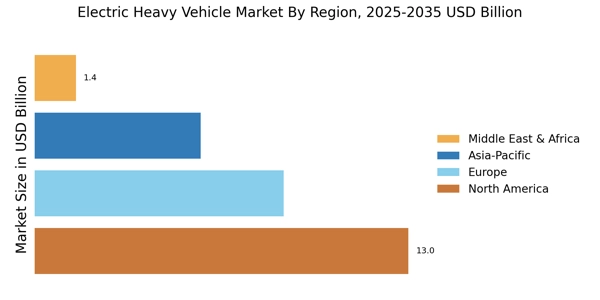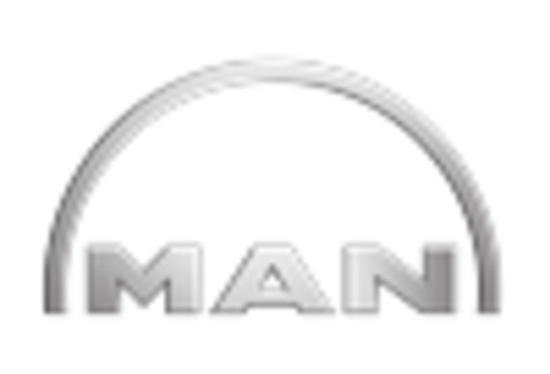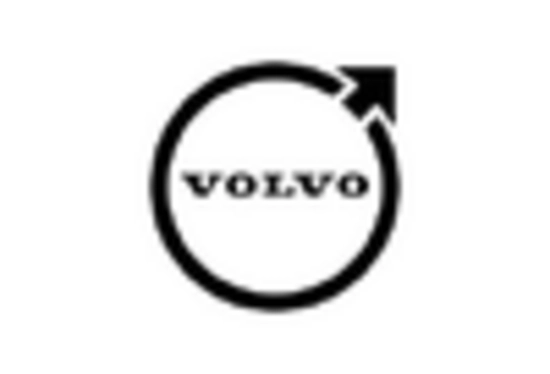Rising Environmental Concerns
The Electric Heavy Vehicle Market is experiencing a surge in demand due to increasing environmental concerns. As awareness of climate change and air pollution grows, stakeholders are seeking sustainable alternatives to traditional diesel-powered heavy vehicles. This shift is evidenced by a projected increase in electric heavy vehicle sales, which is expected to reach 1.5 million units by 2030. The transition to electric vehicles is seen as a crucial step in reducing greenhouse gas emissions, aligning with international climate agreements. Consequently, manufacturers are investing heavily in electric heavy vehicle technology, aiming to meet the rising expectations of environmentally conscious consumers and regulatory bodies. This trend not only enhances the market's growth potential but also encourages innovation in electric vehicle design and infrastructure development.
Economic Incentives and Subsidies
The Electric Heavy Vehicle Market is benefiting from various economic incentives and subsidies offered by governments worldwide. These financial incentives are designed to encourage the transition from fossil fuel-powered vehicles to electric alternatives. For instance, many countries have implemented tax credits, grants, and rebates for businesses that invest in electric heavy vehicles. This has led to a notable increase in fleet electrification, with some regions reporting a 30% rise in electric heavy vehicle purchases due to these incentives. Such policies not only reduce the initial cost burden on companies but also promote long-term savings through lower operational costs. As these economic measures continue to evolve, they are likely to play a pivotal role in shaping the future landscape of the electric heavy vehicle market.
Corporate Sustainability Initiatives
The Electric Heavy Vehicle Market is increasingly influenced by corporate sustainability initiatives. Many companies are adopting ambitious sustainability goals, which often include transitioning their fleets to electric heavy vehicles. This trend is driven by the need to enhance brand reputation and meet consumer expectations for environmentally responsible practices. Recent surveys indicate that over 70% of logistics companies are planning to incorporate electric heavy vehicles into their fleets by 2027. This shift not only aligns with corporate social responsibility objectives but also offers potential cost savings through reduced fuel and maintenance expenses. As more corporations commit to sustainability, the demand for electric heavy vehicles is expected to rise, further propelling market growth.
Increasing Fuel Prices and Operational Costs
The Electric Heavy Vehicle Market is being propelled by rising fuel prices and operational costs associated with traditional heavy vehicles. As fuel prices continue to fluctuate, many fleet operators are seeking more cost-effective alternatives. Electric heavy vehicles present a viable solution, as they typically offer lower energy costs compared to diesel. Recent analyses suggest that electric heavy vehicles can reduce fuel expenses by up to 60% over their lifetime. Additionally, the lower maintenance requirements of electric vehicles contribute to overall cost savings. This economic advantage is prompting more companies to consider electric heavy vehicles as a strategic investment. As operational costs continue to rise, the market for electric heavy vehicles is likely to expand, driven by the pursuit of more efficient and sustainable transportation solutions.
Technological Advancements in Charging Infrastructure
The Electric Heavy Vehicle Market is significantly influenced by advancements in charging infrastructure. The development of fast-charging stations and improved battery technologies is facilitating the widespread adoption of electric heavy vehicles. Recent data indicates that the number of charging stations has increased by over 50% in the last two years, enhancing the feasibility of electric heavy vehicle operations. This infrastructure expansion is crucial for logistics companies that rely on heavy vehicles for transportation. As charging times decrease and accessibility improves, the operational efficiency of electric heavy vehicles is likely to increase, making them a more attractive option for fleet operators. The ongoing investment in charging networks is expected to further bolster the market, as it addresses one of the primary barriers to electric vehicle adoption.


















Leave a Comment